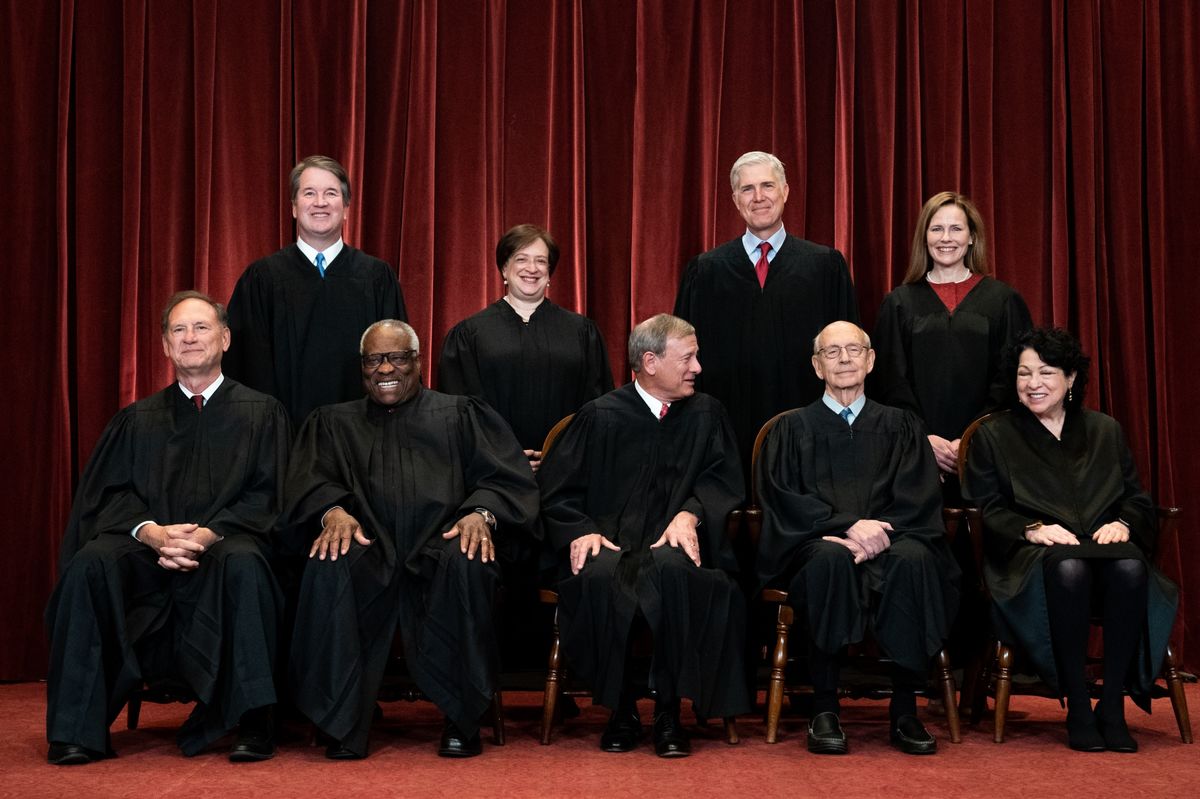Op-ed
Bombshell report deals another blow to the Supreme Court’s reputation

Column
Navigating Bias and Ethics in AI-Powered Cybersecurity: The BRACE Framework Approach

♦ Professor Ojo Emmanuel Ademola is a Nigerian Professor of Cyber Security and Information Technology Management, and holds a Chartered Manager Status, and by extension, Chartered Fellow (CMgr FCMI) by the highly Reputable Royal Chartered Management Institute.
Column
The Call for Reform: Embracing Chief Awolowo’s Vision for a Better Nigeria
As we celebrate the 115th Posthumous birthday of Chief Jeremiah Obafemi Oyeniyi Iyanda Awolowo, GCFR, it is essential to reflect on the valuable lessons that today’s politicians can learn from his exemplary leadership. Chief Obafemi Awolowo, a visionary and transformative leader, left a lasting legacy of progressive governance, innovative policies, and unwavering commitment to the betterment of Nigeria. Chief Awolowo’s emphasis on reform to drive progress, development, and prosperity for all Nigerians remains as relevant today as it was during his tenure. In honouring Chief Awolowo’s birthday, it is fitting to consider how his principles can guide policymakers in navigating the complexities of modern governance and leading Nigeria toward a brighter and more sustainable future.

Reflecting on the indelible mark he left on Nigeria through his visionary leadership, particularly his groundbreaking free education policy, Chief Awolowo’s legacy continues to resonate with many Nigerians, myself included. Personally, I owe much of who I am today to the opportunities afforded to me through this policy. In honour of Chief Awolowo’s birthday, it is fitting to explore and celebrate his attributes that today’s politicians can emulate for the betterment of our nation.
Chief Obafemi Awolowo was a visionary leader who played a key role in shaping modern Nigeria. His commitment to the principles of justice, equity, and progress made him a champion of the common man and a symbol of good governance. As we celebrate his 115th Posthumous birthday, it is important to reflect on his legacy and the values he stood for.
♦ Professor Ojo Emmanuel Ademola is a Nigerian Professor of Cyber Security and Information Technology Management, and holds a Chartered Manager Status, and by extension, Chartered Fellow (CMgr FCMI) by the highly Reputable Royal Chartered Management Institute.
Column
Driving Collaboration for Living Wage: Partnership Between Government and Labour Unions
In today’s complex and dynamic workforce, the partnership between the government and labour unions is integral in driving sustainable progress. Both entities need to forge a unified front and identify shared priorities, particularly regarding job creation, workplace safety, fair wages, and social benefits. In doing so, they can collaborate effectively to address the needs of workers while also advancing broader national objectives, such as the establishment of a living wage.

The intricate relationship between government policies and labour unions presents a complex and challenging dynamic. While the government focuses on implementing policies to drive economic growth, social welfare, and national development, labour unions prioritize advocating for the rights and well-being of workers. This dichotomy can result in apparent discord, with labour unions resorting to strikes and protests to express their disagreement with government policies.
As the government pursues policies serving the broader national interest, it is essential to acknowledge the advocacy of labour unions for the welfare of workers. Despite occasional conflicts of interest, fostering understanding and cooperation between these two entities is critical. By delving into the complexities of this relationship and exploring avenues for collaboration, a more balanced and harmonious approach to policy-making can be achieved. This essay highlights the significance of cultivating understanding and cooperation between the government and labour unions, with the ultimate goal of attaining mutually beneficial outcomes.
However, it is important to recognize that both the government and the labour union share a common goal of promoting the welfare and prosperity of the workforce. Instead of approaching issues with hostility, there is a crucial need to foster understanding and cooperation between the two parties. This can be achieved through open dialogue, transparent communication, and a willingness to engage in constructive discussions.
One approach to building understanding and cooperation is for the government to provide comprehensive explanations for its policies and the rationale behind them. When labour unions are presented with clear and detailed information about the objectives and expected outcomes of government policies, they are better equipped to assess the potential impact on their members. This level of transparency helps to dispel any misconceptions or mistrust, paving the way for more informed and productive conversations.
Additionally, the government can actively seek input from labour unions during the policy-making process. By involving union representatives in discussions and seeking their perspectives, the government demonstrates a commitment to considering the interests of workers. This collaborative approach not only enriches the decision-making process but also conveys a message of inclusivity and mutual respect.
Furthermore, the government and labour unions must work together to identify areas of common ground. For instance, in the manufacturing sector, both parties may share a common goal of ensuring workplace safety. By collaborating on safety protocols and regulations, the government and unions can demonstrate their commitment to protecting workers’ well-being. Another example is related to fair wages, where both the government and unions can collaborate to establish minimum wage policies that balance the interests of businesses and workers. In doing so, they can provide a foundation for equitable compensation while also fostering a healthy business environment.
Additionally, in the public sector, both entities can work together to address issues such as pension plans and healthcare benefits, ensuring they align with the needs of employees and the fiscal sustainability of government programs. Through these examples, it is evident that aligning on common objectives allows the government and labour unions to engage in constructive dialogue and collaborative decision-making, yielding benefits for both workers and the broader society.
Certainly! The synergy of working together enables the government and labour unions to come up with a living wage for workers. By collaborating to identify areas of common ground, such as fair wages, both parties can align on the shared objective of ensuring that workers receive a living wage that supports their basic needs and fosters financial stability. For example, in sectors such as hospitality or retail, the government and unions can join forces to establish minimum wage standards that are reflective of the cost of living and provide workers with a means to support themselves and their families.
Furthermore, through open dialogue and collaboration, the government and unions can leverage their combined expertise to develop comprehensive wage policies that address industry-specific challenges while promoting socio-economic prosperity. This cooperative approach not only benefits workers by ensuring a fair and sustainable wage but also supports businesses in attracting and retaining a skilled and motivated workforce. By harnessing the synergy of their efforts, the government and labour unions can pave the way for the implementation of living wage initiatives that not only uplift workers but also contribute to the overall well-being of communities and the economy.
Several real-world examples highlight the power of collaboration between the government and labour unions. In countries such as Germany and the Nordic nations, social dialogue between government, employers, and trade unions has been instrumental in shaping policies that support workers’ rights, economic growth, and social stability. Through constructive negotiation and cooperation, these nations have been able to navigate complex economic challenges while upholding strong labour protections.
Essentially, fostering understanding and cooperation between the government and labour unions is indispensable for the effective implementation of policies and the promotion of the well-being of workers. By prioritizing transparency, dialogue, and collaboration, both parties can find common ground and work towards mutually beneficial solutions. This approach not only promotes social harmony but also leads to more sustainable and impactful policy outcomes. The relationship between the government and labour unions is a fundamental aspect of societal well-being and economic prosperity. It is imperative to recognize that effective policies must consider the rights and welfare of workers in conjunction with the broader national interest.
This cooperative approach is crucial for shaping policies that uphold the rights, dignity, and prosperity of the workforce. It not only fosters a more positive and productive working environment but also contributes to the long-term resilience of the socio-economic fabric. Embracing a spirit of understanding and cooperation between the government and labour unions is not only essential for harmonious labour relations but also integral for the long-term sustainability and prosperity of the economy.
As we move forward, let us recognize the power of collaboration in shaping policies that not only serve economic growth and national development but also prioritize the rights, dignity, and prosperity of the workforce. Promoting mutual understanding and cooperation between the government and labour unions is a significant step toward achieving policy outcomes that align with the interests of both parties and contribute to the overall advancement of society.
Conclusively, the synergy between the government and labour unions is imperative for achieving a fair and equitable working environment. By aligning on shared goals related to living wages and other vital employment factors, both parties can harness their collective influence to implement policies that not only benefit individual workers but also contribute to the welfare of the entire society. Through ongoing collaboration and cooperation, they can pave the way for a more resilient and inclusive economy, thereby fostering a better quality of life for all.
♦ Ojo Emmanuel Ademola is a college professor
-

 Column2 days ago
Column2 days agoNavigating Bias and Ethics in AI-Powered Cybersecurity: The BRACE Framework Approach
-

 News3 days ago
News3 days agoTrump trial update: Trump rebuked by judge for speaking during jury selection — and 7 jurors are seated
-

 Education3 days ago
Education3 days ago11 Communication Students Awarded Scholarships at TSU’s Commweek
-

 Lifestyle3 days ago
Lifestyle3 days agoBody of O.J. Simpson to be cremated this week; brain will not be studied for CTE
-

 Africa3 days ago
Africa3 days agoDonors raise more than 2 billion euros for Sudan aid a year into war
-

 News3 days ago
News3 days agoNigeria suspends permit of 3 private jet operators
-

 News3 days ago
News3 days agoNigeria: chibok abduction anniversary spurs demands for justice
-

 News3 days ago
News3 days agoOMG: Dismissed Juror Has Describes What It’s Like Seeing Trump In Person











